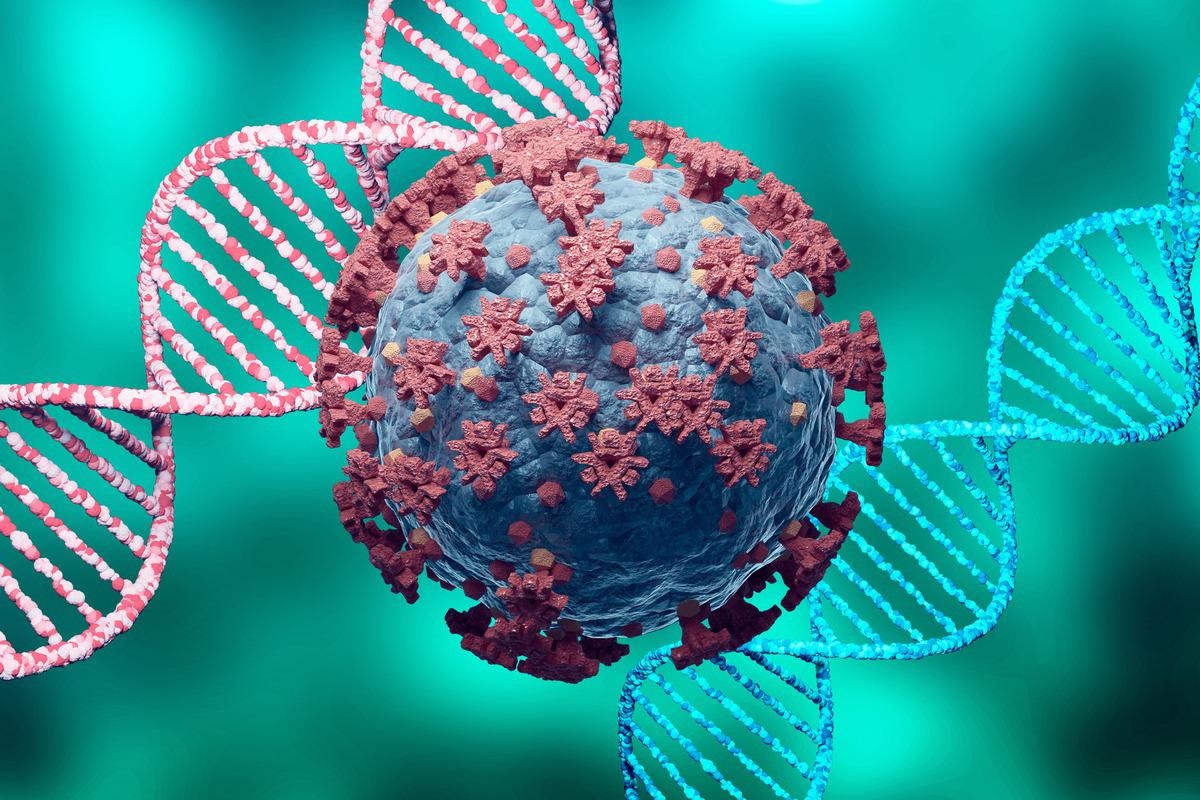A group of scientists has claimed that the severity of coronavirus disease 2019 (COVID-19) depends on the method of exposure, the pathogenicity of the pathogen, and the susceptibility of the host and its response to the pathogen.
Study: SARS-CoV-2 genome-based predictions of severity correspond to lower qPCR values and higher viral load. Image source: Adao / Shutterstock
However, the current COVID-19 pandemic caused by the rapid onset of the severe acute respiratory syndrome Coronavirus-2 (SARS-CoV-2) has shown considerable diversity in both host and virus with a wide range of clinical outcomes .
background
Previously, the severity of the disease was largely related to the phenotype of the host, e.g. Gender, age, blood type, etc. This pandemic has demonstrated that geographic region, viral mutations, and genetic susceptibility of the host play an important role in severe clinical outcomes.
To predict the severity of an individual’s disease, scientists have used computer models based on phenotypic, genetic, and demographic data.
The main goal of these models is to tailor the best treatment for a patient infected with SARS-CoV-2. Predicting the severity of the disease early on can help maintain life and health.
Scientists found that real-time PCR data with increased cycle thresholds could be linked to a 9 percent decrease in the likelihood of hospital mortality. They also showed that patients with a cycle threshold below 23 were 3.9 times more likely to have hospital mortality than those with cycle thresholds above 33.
Previous studies have shown that while using PCR cycle thresholds is an effective predictor of COVID-19 outcome, it cannot distinguish between different degrees of disease severity.
Scientists used genome-wide sequencing of SARS-CoV-2 to identify newly emerged variants. Some of the variants have been classified as worrying variants due to their greater virulence, transmissibility and bypassing the vaccine or natural infection-induced immune response. These variants are due to mutations in the spike sequence and other parts of the virus genome.
A group of researchers used this SARS-CoV-2 sequence data and developed an algorithm to predict severity based on virus mutations.
They also identified seventeen variants associated with severe clinical outcomes and sixty-seven variants associated with mild clinical symptoms. This report demonstrated the discriminatory ability to classify severe patients by doing an area under the curve analysis. Researchers recently focused on evaluating whether a genome-based prediction algorithm designed to predict clinical severity could also predict polymerase chain reaction (PCR) results as a surrogate for determining viral load and severity.
This study is available on the medRxiv * preprint server.
About the study
The current study has extensively validated predictions from machine learning models and demonstrated their credibility through powerful analytical tools for predicting disease severity. Scientists are positive that their results would help clinicians tailor a line of treatment for a particular patient. In the current study, an outgroup sample was used that contained an orthogonal severity marker that aided the algorithm that can identify strains of the virus that are biologically unique and have significant clinical differences.
A previous study related to Middle East Respiratory Syndrome (MERS) virus reported that viral load is strongly linked to the possibility of serious infection and death. Also in this study, it was found that lowering the cycle threshold increased the risk of death by 17%.
However, this study did not take into account factors such as the correlation between age, viral load and disease severity. If a cycle threshold is currently below 20, the person is considered “highly infectious”.
The researchers used the previously published algorithm that was used to compare the viral genome-based severity predictions with clinically derived PCR-based viral loads from 716 viral genomes. The samples that presented severe COVID-19 results had an average cycle threshold of 18.3. Additionally, those with mild symptoms had an average cycle threshold of 20.4. The current study projected a significant correlation between the predicted severity probability and the cycle threshold.
diploma
This study had several limitations, including the use of the PCR cycle threshold as a substitute for clinical severity. However, the PCR test can only reasonably predict the clinical outcome and is not an ideal measure.
Another limitation of the study was the low number of viral genotypes.
Despite these limitations, the study showed that a genome-based algorithm could be linked to the clinical diagnostic test metrics that could predict the severity of COVID-19.
The researchers showed that viral genetic information and patient demographics could help clinicians determine an appropriate COVID-19 treatment for an infected person.
In addition, SARS-CoV-2 sequence data along with in silico-derived severity markers could help develop vaccines for new variants.
This study also found that genomic surveillance could help identify new strains of the virus with epidemic potential, giving health authorities enough time to prepare a strategy to contain the transmission.
*Important NOTE
medRxiv publishes preliminary scientific reports that are not peer-reviewed and therefore are not considered conclusive, guide clinical practice / health-related behavior, or should be treated as established information.

